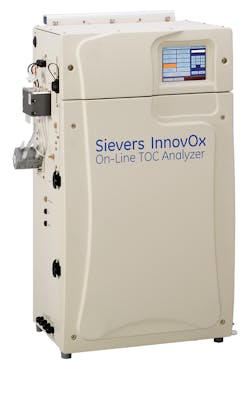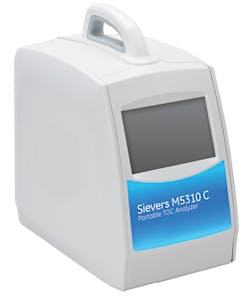Using Advanced Metering Infrastructure to Lower Costs and Improve Performance
By Dan Pinney
Nestled in the rolling hills of northern West Virginia, the City of Fairmont is home to Fairmont State University. Just 20 miles northeast of the University of West Virginia, collegiate life reigns supreme here. As with any college town, residential turnover is the norm, and the constant move-ins and move-outs strain the city’s water utility resources.
“We serve many rental properties and apartments, so there’s a lot to manage in terms of monitoring customer usage and handling inactive accounts,” said Mark Moore, utility controller for the City of Fairmont Utilities. “Additionally, it can be challenging to keep non-revenue water to a minimum while ensuring the best possible service to our customers.”
With AMI technology, the City of Fairmont upgraded its infrastructure and enhanced customer service.
Opportunity For Better Efficiency
Amid the hustle and bustle, the process for reading meters and managing customer billing grew inefficient. The metering system used by City of Fairmont Utilities required technicians to walk or drive by each of its 14,000 water meters for readings and then track them with a handheld device for billing. This meant that meters could only be read occasionally, and leaks or undetected water use might go on for weeks.
Because of its limited staff and large coverage area, the City of Fairmont didn’t have the resources to check inactive meters for possible tampering or execute appropriate meter testing programs. This resulted in hundreds of inactive meters being manually turned on without the city being notified.
“We wanted to be able to identify leaks, pinpoint consumption from inactive meters and detect tampering to reduce non-revenue water,” said Moore.
In conjunction with the West Virginia Public Service Commission, the utility decided a complete upgrade to an advanced metering infrastructure (AMI) solution was necessary to tackle the issue of non-revenue water and to better meet customer needs.
“With AMI, we knew that we’d be able to get information from our meters in a timely way,” said Moore. “The solution would allow us to dramatically improve our efforts to derive revenue from the water we were delivering while also taking boots off the ground and devoting those resources to other important functions.”
The West Virginia utility reduced excess water usage by 25 million gallons per year.
Bringing the Vision to Life
The City of Fairmont Utilities set out to put its plan for a smart water solution into action. Moore and his team needed the solution to:
• Reduce human error and estimation in meter readings
• Enhance leak detection efforts
• Monitor unconventional and/or inactive accounts
• Empower customers to view their usage and identify issues in real time
• Aid in budgeting for water conservation and cost savings
After a thorough evaluation process, the utility determined that the Sensus AMI solution addressed those needs.
Implementing a Smart Water Network
Working with a distributor partner, City of Fairmont Utilities initially installed 6,500 water meters covering its two largest routes, with the intention to roll out the full solution over a five-year period. However, the benefits were realized so quickly that the utility decided to shorten the implementation timeframe.
“The impact of our Sensus AMI solution was so immediate that we installed the rest of the meters right off the bat,” said Moore.
The solution included 14,000 Sensus iPERL® residential meters, and a combined 200 OMNI™ Compound (C²) and OMNI™ Turbo (T²) commercial meters. The utility bolstered its deployment with Sensus FieldLogic™ and Regional Network Interface (RNI)™ software, delivered via the Sensus Software as a Service (SaaS) platform. Finally, the Sensus FlexNet® communication network and Sensus Analytics served as the backbone of the utility’s smart water network, enabling Fairmont to remotely monitor water usage and increase billing accuracy for customers across the region.
“You can’t beat the convenience, information and technology the AMI system offers,” said Moore. “Because of the continuous usage report, we identified 25 million gallons of non-revenue water in four days instead of 40.”
Putting the Data to Work
The AMI solution paved the way for the implementation of a new customer portal, a solution that allows customers to monitor their individual water usage and empowers them to better manage and adjust water consumption to target goals and budget within their means.
“When people gain awareness and control, they not only reduce usage and lower expenses, they become happier customers,” said Moore.
Now, with the customer portal, instead of calling to dispute a bill, customers have access to the data points and can view the usage report firsthand.
“We had folks that were gone all day and when we viewed their consumption we found out somebody next door was stealing their water while they were at work. With the customer portal, I can see current billing cycle information and all of the alerts,” said Moore. “I personally anticipate my usage to be around 150 gallons a day. However, with the alerts, if it goes over 150, I get a text and email that notifies me.”
Immediate and Lasting Impact
Upon launching the new system, City of Fairmont Utilities quickly learned that approximately 15 percent of its old meters were failing to provide accurate readings, and multiple meter pit locations needed renewal.
“It used to be an exhaustive process for staff to track and evaluate our meters across the five counties we serve,” explained Moore. “The AMI solution took care of this immediately, allowing us to virtually track and monitor metering performance in even our most rural locations.”
Since rolling out the system, the utility has achieved more than 99 percent accuracy in its meter readings while saving $30,000 a year by reducing non-revenue water, improving billing accuracy and enhancing overall system performance.
The system has also helped to improve transparency with customers and eliminated 3,600 work order trips. In a university town, there are constant housing transitions and fluctuations in residency. When a tenant moves out, the utility bill goes back in the landlord’s name. With the AMI system, the City of Fairmont can remotely collect the ending read, beginning read and any other information they may need, taking the burden of manual reads off the technician and allowing resources to be reallocated.
“With time saved on meter readings and billing, we’ve diverted those staff resources to an ongoing data and meter testing program,” added Moore. “This initiative will help us ensure accuracy and great customer service for years to come.” WW
About the Author: Dan Pinney is the global director of water marketing for Sensus. Pinney has 27 years of experience in the global water industry with leadership roles in operations and development at Sensus. He attended the University of Florida, majoring in electrical engineering.
Circle No. 237 on Reader Service Card


